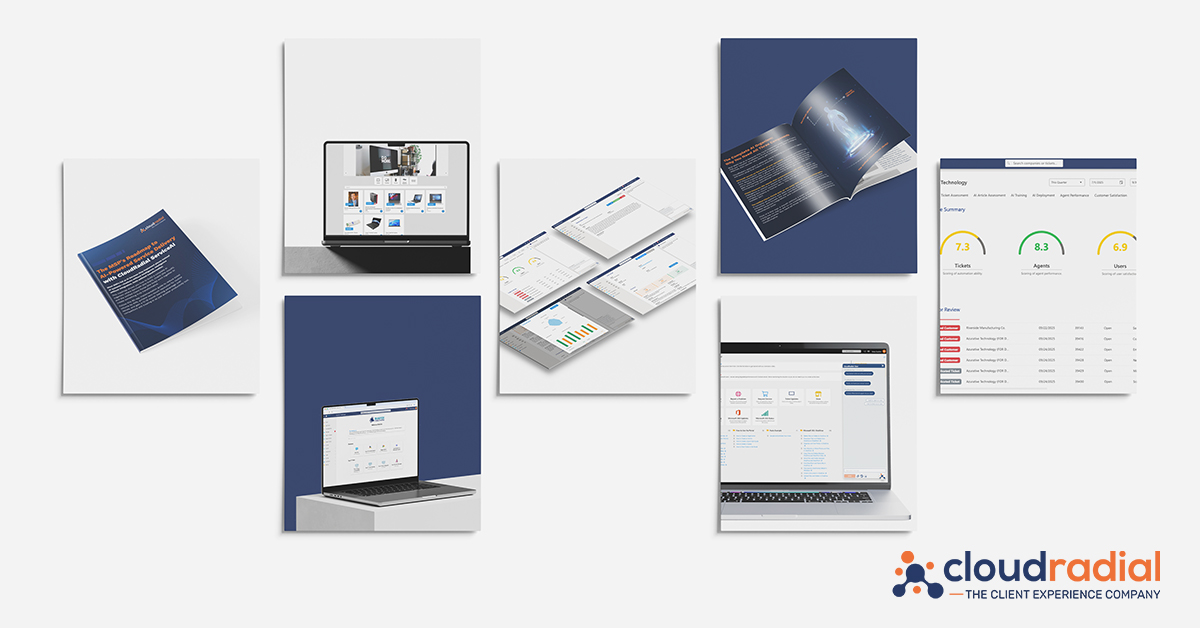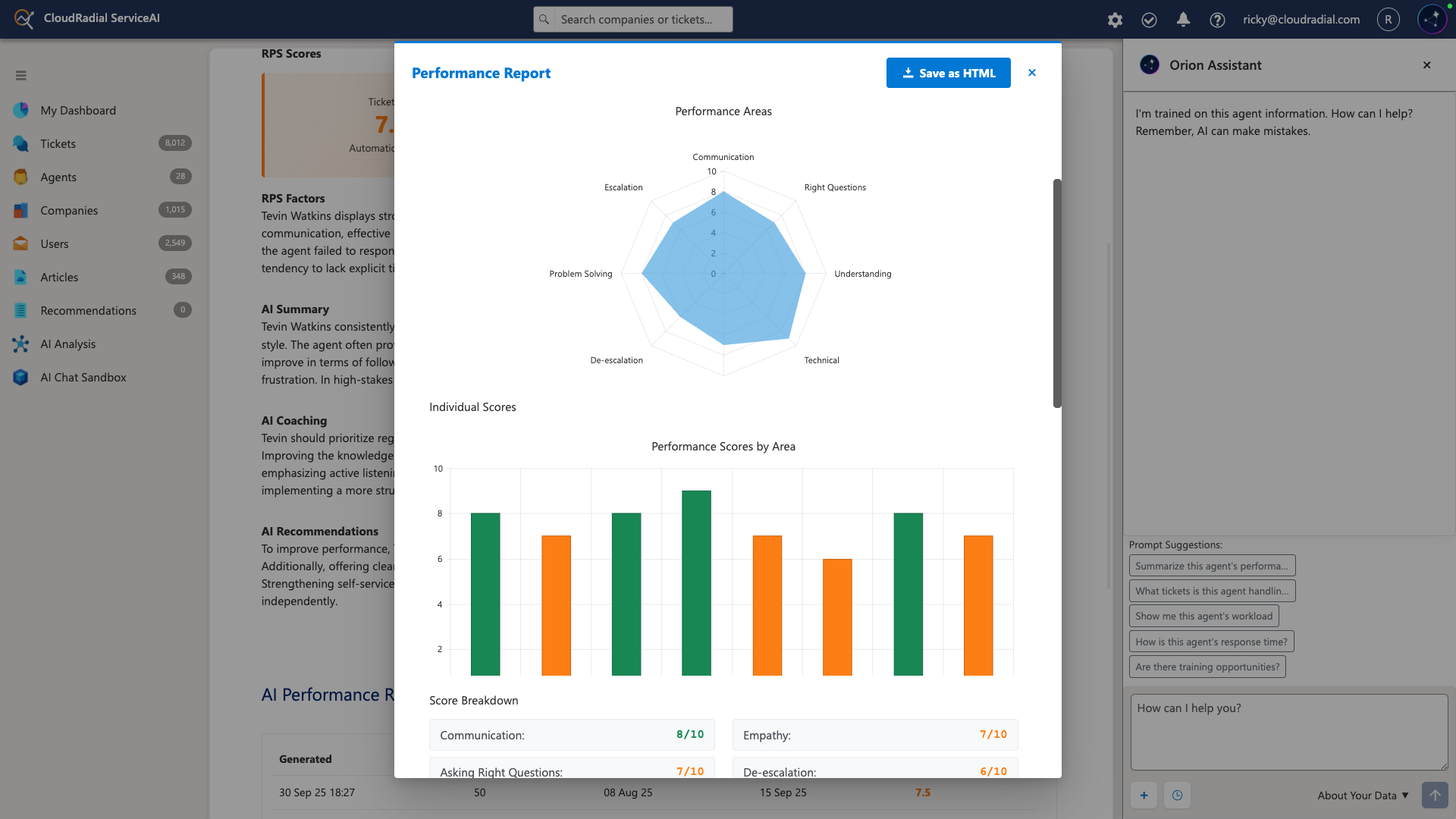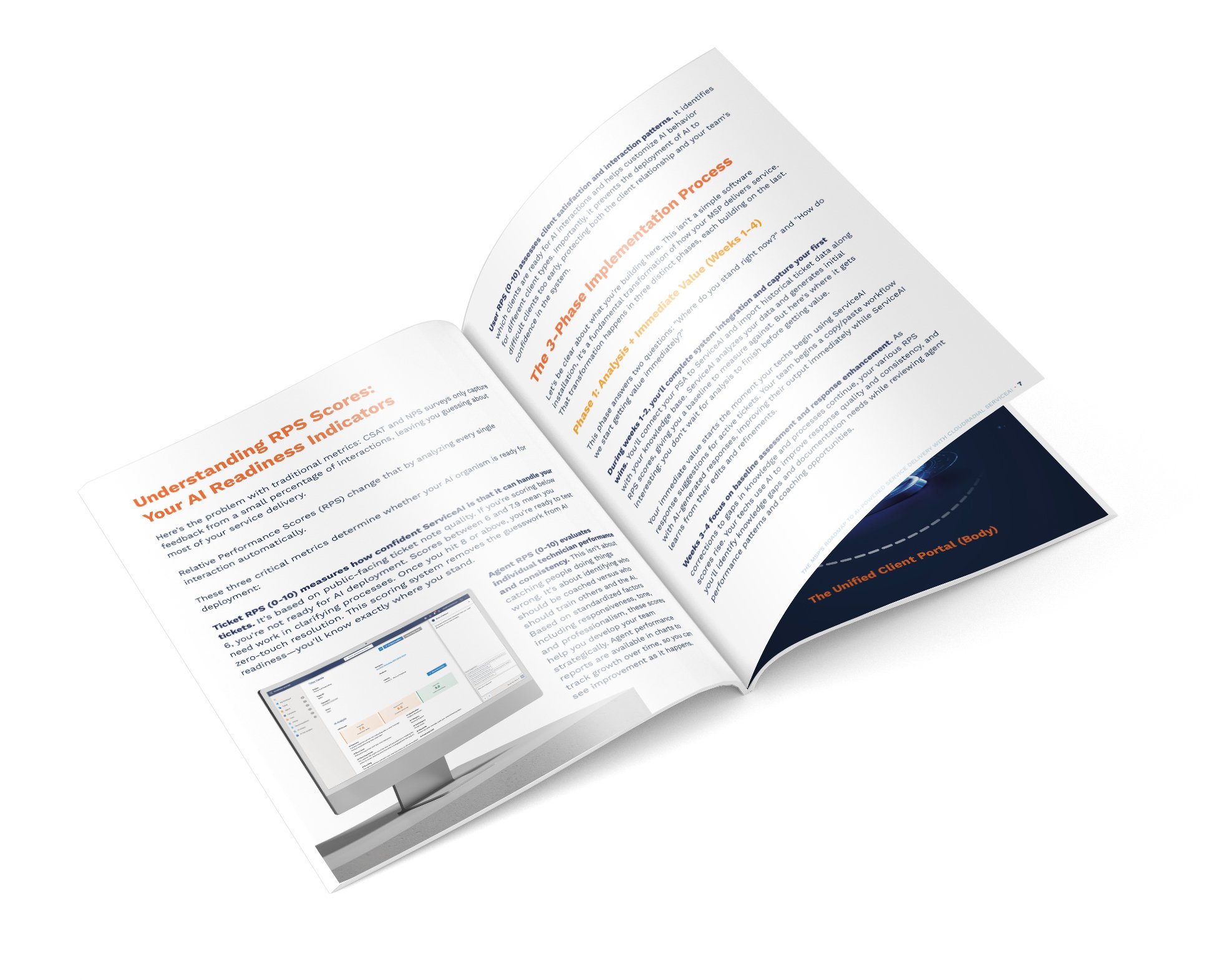CloudRadial 2025: The Year MSPs Stopped Experimenting with AI and Started Transforming
As we close out 2025, it's clear that this was CloudRadial's most transformative year yet. We didn't just release new features—we fundamentally...
Get everything you need for the ultimate client experience
Enterprise-grade infrastructure with the flexibility MSPs demand
Perfectly tailored AI that knows your specific MSP

Build your own Shopify-like store with your PSA products & distributors
Have clients to submit tickets directly to your PSA, freeing up your team's time
Pre-triage and route tickets correctly with the help of AI
Deliver instant, accurate answers that can help achieve zero-touch resolution
You'll learn things like how to add revenue without adding cost, MSP best practices, and how to master client management.

Inflation. Raising wages. Increasing software costs. Competitive positioning. Business growth.
The list of reasons to consider raising your seat price is endless.
But we also know it’s a little daunting...
What if you lose customers?
Where do you start and what should you raise prices to?
How do you explain the sudden changes to customers who have been with you since the start?
How will you match your competition but not discourage potential customers?
Being an MSP can be challenging.
But raising your prices shouldn’t be.
After all, you can’t grow and scale your business if your prices are too low.
Research shows that MSPs are in demand now more than ever. So, let’s see how you keep current customers, win new business, and raise your seat price.
----
What is per-seat pricing?
Per-seat pricing, also referred to as per-user pricing, is a type of pricing model where you charge a specific fee for each user or 'seat' using your MSP services. This fee includes access to various services and customer support.
Unlike the per-device pricing model, seat pricing accounts for every device a user might use and sets the cost accordingly.
Most MSPs use this pricing model because it's simple yet scalable.
You know how many seats your customers need and can scale your services accordingly. And your customers can budget for their IT expenses without worrying about fluctuating bills.
When it comes to determining your seat price there are various factors you’ll want to consider.
For example:
When it comes to pricing, the most important thing to consider is, will this make my MSP profitable?
And if the answer is no, you’ll need to go back to the drawing board.
Why should you consider raising your seat price?
The truth is, most MSPs (including you) struggle to set prices that reflect the true value of their services.
However, by simply raising your seat prices, you'll be able to charge a rate that aligns more accurately with the level of support and services you offer.
And the best part? You'll become more profitable while still providing the high-quality service your clients expect, and you will also be able to:
When should you raise your per-seat price?
Like any business, MSPs are grappling with the increasing cost of doing business. Supply chain issues, labor shortages, and inflation are just a few of the challenges everyone is facing.
And these challenges can seriously affect your bottom line and make it hard to remain competitive in the MSP market.
To stay ahead of the curve and ensure your business's long-term success, it's a good practice to assess your pricing model to ensure that it reflects your business's current needs and market trends.
By reviewing your pricing strategy, you can identify opportunities to increase your prices. Especially if you're experiencing:
The goal with raising prices is to help your business remain profitable and competitive.
What should you raise your prices to?
Pricing strategies vary from MSP to MSP. There is no one-size-fits-all approach.
However, Syncro reported that the average MSP gross service margins typically range between 40% and 60%. Top MSPs achieve 70% or higher. If your margin falls below 50%, your first step should be to see whether you can increase it reasonably.
To figure out how much you can raise your per-seat/per-user pricing, you should pay attention to the following factors:
What if you lose customers?
Don't panic if you lose some customers.
There will always be more.
That being said, when discussing pricing, make sure you approach the topic with care.
Be upfront and clear and give them plenty of notice, but make sure you thoroughly explain why your prices are increasing.
Doing the above will help your customers understand and accept the change.
And if they don’t, they didn’t see the value in your MSP and were probably the ones flooding your support desk with tickets while paying the minimum amount for your services.
Remember, your customers are business owners too and have likely had the same conversation with their clients. So go in with confidence and make sure you sell the value of your MSP.
----
Raising seat prices might feel daunting, but it can bring many long-term benefits.
More money means you can invest in better services, technology, and talent, which can help you stay competitive and profitable.
And as Harvard Business Review states, the fastest and most effective way for a company to realize its maximum profit is to get its pricing right. The right price can boost profit faster than increasing volume; the wrong price can shrink it just as quickly.
So, don't worry about the initial challenge. Keep your eyes on the long-term benefits. You've got this!

As we close out 2025, it's clear that this was CloudRadial's most transformative year yet. We didn't just release new features—we fundamentally...

Your service desk manager pulls up the dashboard and smiles. Response times are down 35%. Tickets per technician are up 22%. Documentation time has...

Most AI implementations fail because they're treated like software installations instead of business transformations.